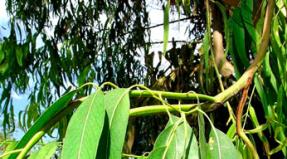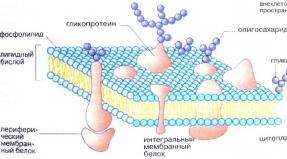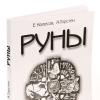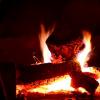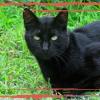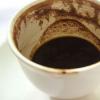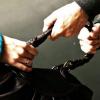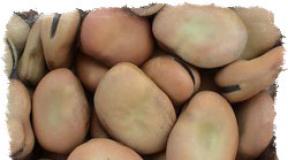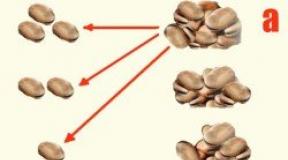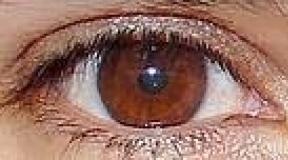Analysis of whole raw materials henbane leaves. Other names: sleepy dope, belladonna, wild berry, wild cherry, rubuha. Habitat in nature
Henbane black(black fade) - Hyosciamus niger L.
Synonyms: night blindness (ukr. blekota black, cradle, cradles, nimitsya black, nimitsya, cradle, tooth).
Description. Black henbane is a biennial herbaceous plant from the nightshade family (Solanaceae) 30–100 cm high. The root is branched, taproot. Stem erect, hollow inside, branched or simple, densely covered with soft sticky hairs.
Medicinal raw materials: leaves.
biological features. In the first year of life, it gives only a rosette of basal leaves, and in the second year it already bears fruit. It has a very extended flowering period - from June to September. In the first period of growth, it requires increased soil moisture, but an excess of moisture in a later period adversely affects the yield.
Habitat. In the wild, black henbane is found near rivers, on fallow lands. As a weed, it grows on roadsides, wastelands, ditches and other waste lands.
Spreading. Black henbane has a very large distribution area. It is found almost throughout the entire USSR, with the exception of the taiga (northern) part of Siberia. As a weed, it grows almost everywhere.
In recent years, black henbane has been introduced into cultivation and is already cultivated in specialized state farms in the Novosibirsk and Voronezh regions.
Under natural conditions, raw materials for black henbane are harvested in Ukraine, the Bashkir Autonomous Soviet Socialist Republic, the Voronezh Region, the Krasnodar Territory and other regions of the Soviet Union.
Composition of active substances. The main active ingredients of black henbane are alkaloids (0.05–0.1%): hyoscyamine, atropine, scopolamine. They act like atropine: they have an antispasmodic effect on smooth muscles, increase intraocular pressure, dilate the pupils of the eyes, and cause palpitations. In addition, henbane contains protein substances, calcium oxalate, caxap, gum, fatty and essential oils, sugar, etc. Henbane alkaloids act differently on the central nervous system: hyoscyamine increases, and scopolamine lowers the excitability of the nervous system.
Application. Black henbane and preparations obtained from its leaves are used as a sedative, analgesic and anticonvulsant, similar to belladonna preparations. In homeopathy, it is used in the treatment of violent insanity.
It has been known as a remedy since ancient times. Currently, henbane is included in the pharmacology of many countries. It is prescribed in very small doses: in powders, drops, in the form of a dry extract for the treatment of digestive and respiratory organs as a sedative. In large doses, henbane causes strong excitement and poisoning. A mixture of dry leaves of black henbane, sage and dope is used as a smoke for the treatment of bronchial asthma. Aeron tablets containing hyoscyamine are used for nausea and dizziness. Bleached oil is used as an external remedy in a mixture with chloroform and other substances for rubbing in muscle and neuralgic pains.
In folk medicine, black henbane is used very, very rarely.
Agrotechnics of cultivation. Site selection. Black henbane gives the best yields when grown on fertile, well-drained soils with a slightly acidic reaction. As the best predecessors, VILR recommends black fallow, winter crops running on fertilized fallow or on a layer of perennial grasses, as well as tilled crops.
tillage It is produced basically in the same way as for other tilled plants.
Fertilization. VILR experiments established that positive results on the accumulation of alkaloids in black henbane are provided by nitrogen and phosphorus fertilizers. As the main fertilizer introduced from autumn, 30–40 t/ha of rotted manure with 60 kg/ha of superphosphate is recommended. During sowing, granular superphosphate is introduced into the rows at the rate of 6–8 kg/ha of the active substance. In the summer, one and a half to two months before harvesting the leaves, they are fertilized with ammonium nitrate at the rate of 30 kg / ha.
On plantations of the second year of culture, in early spring, 30 kg/ha of nitrogen and potash, 45 kg/ha of phosphorus fertilizers are applied.
reproduction produced by sowing seeds directly into the soil in early spring or before winter. The sowing method is ordinary with a row spacing of 60 cm. For spring sowing, the seeds are stratified within 40–45 days. The seeding rate is 8 kg/ha, the seeding depth is 1.5–2 cm. They are sown with vegetable or grain seeders.
Before winter, they are sown as late as possible, before the onset of frost, in order to avoid possible seed germination in the fall.
plantation care consists in two or three timely loosening of row-spacings with simultaneous weeding and fertilization in the form of top dressing. The same is done in early spring on the plantations of the second year of culture. At winter sowing dates, loosening is carried out at the first opportunity for field work. And with spring sowing, the first treatment is carried out as soon as seedlings are indicated on the mother plants. In the future, loosening and weeding is carried out if necessary.
Cleaning rosette leaves in the first year of life is produced twice during the summer in July - August. At this time, the leaves are most rich in alkaloids.
Stem leaves are harvested by machines in the second year of culture - at the beginning of flowering, and the tops of stems and branches in the form of grass to obtain an extract at the end of flowering, i.e., at the beginning of formation
fruits at the bottom of the inflorescences. The collected leaves and grass are crushed on a straw cutter before drying and immediately sent to the place of drying.
Drying it is produced in dryers at a temperature not exceeding 30–40 ° C. It can also be dried in attics under an iron roof, spreading the raw material in a thin layer on sieves, paper (cardboard), canvas, provided there is good ventilation. The end of drying is determined by the fragility of the petioles of the leaves when bent.
Package produced in bales of 50 kg.
Storage. Henbane leaves should be stored in a well-ventilated area.
quality requirements. Medicinal raw materials of black henbane should consist of intact whole, well-dried stem and basal leaves. In accordance with the State Pharmacopoeia X allowed: moisture-14; total ash - 20 (including ash insoluble in 10% hydrochloric acid - no more than 10); organic and mineral impurities - 1% each; leaves turned brown and blackened - 3; other parts of henbane - 5%. For whole raw materials of crushed parts passing through a sieve with a hole diameter of 3 mm - 8%; for cut raw materials, particles over 8 mm long, no more than 10, particles passing through a sieve with a hole diameter of 0.5 mm, no more than 8%.
Henbane black(hyoscyamus niger L.) is a biennial herbaceous plant from the nightshade family in the first year forms a rosette of basal large leaves of ovoid or oblong shape.
In the second year, a branched stem grows from 20 to 120 cm high. Stem leaves are oblong-ovate, soft, covered with sticky whitish glandular hairs, with an unpleasant intoxicating smell.
The bracts are oblong, the flowers are rather large, dirty yellowish with a purple network of veins.
Blooms from May to August. The fruit is a pitcher-shaped two-celled capsule 2-3 cm long with splayed teeth. Seeds are fine-meshed, brownish-grayish in color.
It grows almost everywhere in Russia: in the south and in the middle zone of the European part, in the Crimea and the Caucasus, in Central Asia, it is also found in Western and Eastern Siberia and the Far East.
It grows near dwellings, in wastelands and sandy places, occasionally in fields and vegetable gardens. In some places in our country, henbane is cultivated. She prefers fertile, loose, neutral soils; loves moisture, but not waterlogged soils.
Black henbane blank
Rosette (basal) leaves are collected from plants of the first year at the end of summer. In the second year of henbane's life, when the plant begins to bloom, stem leaves are collected.
The collection of raw materials should be carried out only in dry and, even better, in sunny weather. Drying should begin on the day of collection. The leaves are scattered in a thin layer in attics or under a canopy with good ventilation. Raw materials are periodically turned over. In warm, dry weather, under a canopy, a henbane sheet dries completely in a week.
Dry leaves have a slight specific smell.
Shelf life of raw materials up to 2 years.
Useful properties of black henbane
Black henbane was previously widely used in medicine. Despite the fact that the content of medicinal substances in it is not more than 0.05%, their effect on the human body is quite strong: they have an m-anticholinergic effect, that is, they reduce or completely stop spasms of the smooth muscles of the biliary and urinary tract, smooth muscles of the intestine and, to a lesser extent, the bronchi. These tropane alkaloids also inhibit the secretion of gastric juice, saliva, lacrimal fluid and mucus.
Chemical composition
Of the plants in the nightshade family, black henbane contains fewer alkaloids, although all its parts are poisonous. The alkaloids hyoscyamine and scopolamine are present. According to GF XI, the content of alkaloids is allowed not less than 0.05%
reduces pain, in small doses is a sedative.
Henbane. Properties and application
Pharmacological properties of henbane
Henbane preparations provide:
The drugs reduce or stop spasms of the smooth muscles of the intestines, biliary and urinary tract, to a lesser extent act on the smooth muscles of the bronchi.
They inhibit the separation of lacrimal fluid, mucus and gastric juice.
Bleach application:
- henbane leaves are part of the anti-asthma collection;
- used to obtain an oil extract used
- externally as a distraction and analgesic for neuralgia,
- myositis, rheumatoid arthritis.
Procurement and storage of raw materials
blank. Rosette leaves are cut with knives or sickles, stem leaves are cut off by hand in the flowering phase. It is allowed to harvest henbane grass, which is harvested during the period of the end of flowering and the beginning of fruiting. It is not allowed to collect leaves affected by powdery mildew, as well as dirty and wet from dew or rain. The leaves are placed loosely in the container so as not to cause their blackening during drying.
The plant is poisonous, so precautions must be taken when harvesting and drying raw materials.
Security measures. It is not allowed to uproot wild plants.
Drying. In attics with good ventilation, the raw materials are laid out in a thin layer (1-2 cm) and periodically stirred. Drying in dryers with artificial heating at a temperature of 40-45 °C is possible. The yield of dry raw materials of leaves is 16-18%.
Standardization. GF XI, no. 2, art. 17.
Storage. In a dry, well-ventilated area, according to list B, separately from other raw materials. Whole raw materials are packed in bales, cut - in bags. Shelf life 3 years.
External signs of raw materials
Whole Raw Material
Whole or partially crushed leaves oblong-ovate, ovoid or elliptical in shape,  pinnately incised, pinnately lobed or entire with an irregularly serrated margin.
pinnately incised, pinnately lobed or entire with an irregularly serrated margin.
Basal leaves with a long petiole, covered on both sides with thick, long, soft hairs;
stem - without petioles, less pubescent, hairs are located mainly along the veins and the edge of the leaf blade. The length of the leaves is 5-20 cm, the width is 3-10 cm. The median vein is whitish, flat, greatly expanding towards the base.
The color of the leaves is grayish green. The smell is weak, peculiar, intensifying with moisture.
Crushed raw materials
Pieces of leaves of various shapes, passing through a sieve with holes with a diameter of 7 mm.
Color greyish green. The smell is weak, peculiar, intensifying with moisture.
The use of preparations of henbane black
Black henbane preparations are rarely used in modern medicine. Because the plant is very poisonous. Only in limited cases they are prescribed as an analgesic and antispasmodic for spasms of the smooth muscles of the stomach associated with diseases of the gastrointestinal tract.
The leaves of this plant used to be part of the anti-asthma collection. In combination with mandrake, dope and henbane, black was used in the Middle Ages as an anesthetic. And this collection, when ingested, caused a feeling of flight and strong visual hallucinations. For which he received the name "magic drink".
Externally, black henbane preparations were used for muscle and joint pain, accompanied by spasms. Now, for this, "Bleached Oil" can be used, extracted from the leaves of the plant, which is rubbed into the skin. This drug is an extract of black henbane leaves in vegetable oil. It consists of crushed dry leaves of black henbane, sunflower oil, pure alcohol (95%) and ammonia (70% ammonia solution). It is used externally for rubbing in rheumatism and neuralgia.
Preparations "Astamol" and "Astmatin" contain an extract of black henbane leaves, has a strong antispastic and analgesic effect, is indicated for diseases of the gastrointestinal tract.
An aqueous extract from the leaves of henbane was formerly used as a base to create a dye for wool, which, when mordant, was dyed olive. And the highly evaporated juice of the plant was used to make a silver-white dye.
Belena is black. Folk recipes
Extract
First of all, take 0.25 g of dry leaves per 100 ml of boiling water. Then boil for a long time until the mass becomes thick. Also, if there is no scale, you should take 1/20 of a teaspoon in half a glass of water. Subsequently, take orally 2 drops of extract per 1 tablespoon of water 3 times a day.
 Tincture
Tincture
First of all, take 15 crushed leaves per 100 ml of vodka. Then take 2 drops per 1 tablespoon of water 3 times a day.
Powder
Take 0.03 g (on the tip of a penknife) 3 times a day. All this is offered if there are no ready-made drugs in the pharmacy.
Externally appliedleaves and seeds for fumigation for toothache , different types of neuralgia. And oil - for gout and bruises (as an analgesic), for rubbing with
quarantine organism
Family: Solanaceae (Solanaceae)
Genus: Henbane (Hyoscyamus)
biological classification
Definition
Henbane black- a weed plant, has an unpleasant odor. It can develop as a biennial or annual winter crop. Height up to 115 cm. The stem is thick, sticky, pubescent. The leaves are alternate pinnately lobed, ovate, the lower ones are petiolate, the upper ones are sessile.
The flowers are solitary, large, pale yellow with a mesh of purple or purple veins. The fruits are pale yellow pitcher-like, two-celled capsules containing small gray-yellow or gray-brown seeds. Flowering from May to July, fruiting from July to August. A highly poisonous plant. Euro-Asian species, known in Australia and North America. (Trukhachev V.I., 2006) (Fisyunov A.V., 1984) (Shishkin B.K., 1955)
Morphology
Shoots of Henbane black are distinguished by a stupefying smell and unpleasant taste. Like the adult plant, they are poisonous. The subcotyl area is pink-violet, naked, underdeveloped. The supracotyloid area is undeveloped. Cotyledons narrow, ovoid (lanceolate). The top is sharp. Cotyledon length 8 - 10 mm, width 2.5 - 4.0 mm. The bases end in small petioles up to 3–5 mm long.
The first and second sheets are alternate. Length 12.0 - 16.0 mm. Width 6.0 - 8.0 mm. First leaf slightly obovate, apex obtuse. The second sheet differs from the first in a slightly wavy edge. The third and all the nearest ones differ from the first ones in larger sizes, they are located next. All leaves taper to varying degrees of woolly, often bluish petioles. Leaf blades and cotyledons on the reverse side often with a blue tint. (Fisyunov A.V., 1984) (Vasilchenko I.T., 1965)
An adult plant has an unpleasant odor and is covered with soft, sticky protruding fluff. Annual - a rosette of elliptical soft leaves, along the edges notched-incised on long petioles. In the second year of development, a thick (diameter at the base is 1.5–2 cm), green, branched stem grows, reaching a height of 115 cm. In weakened specimens, it is simple. The stem is covered with longitudinally lanceolate semi-amplex leaves. (Shishkin B.K., 1955) (Gubanov I.A., 2004)
The flowers are clustered on the tops of the stems in leafy whorls. After flowering, the latter are greatly elongated. The calyx is tubular, broadly campanulate above the middle, with five triangular sharp teeth. The corolla is funnel-shaped, dirty yellow or whitish in color with a network of purple or purple venation. Stamens five, two short and three long. The latter slightly exceed the pharynx with hairy threads in the lower part, attached in the very middle of the tube. Ovary without pubescence. (Shishkin B.K., 1955) (Gubanov I.A., 2004)
The fruit is a multi-seeded jug-shaped box with two nests. Opens with a lid. In the box, gray-yellow or gray-brown, slightly reniform, rounded, flat seeds with a slightly depressed middle part ripen. The surface of the seeds is cellular. The sides of the cells are raised, the fields are matte, slightly shiny, shiny. Seed size: 1.25 - 1.75x1 - 1.25 x 0.5 - 0.75 mm. Weight of 1000 pieces - 0.5 - 0.6 g. (Dobrokhotov V.N., 1961) (Fisyunov A.V., 1984)
The underground part is not branched, without a pronounced root collar, thin, woody, taproot. (Shishkin B.K., 1955) (Trukhachev V.I., 2006)
Biology and development
Henbane black usually develops as a biennial plant. Shoots appear from March to May. The first - at a temperature of +4°C - +6°C. The optimum germination temperature is +18°C - +20°C, the maximum temperature is + 30°C - +32°C. In the first year, a rosette with basal leaves and a root is formed. Throws out a stem, blossoms and bears fruit black henbane in the second year of development. The flowering phase runs from May to June, fruiting - from July to August. Fertility - up to 446,500 seeds per plant.
Freshly ripened seeds germinate only by 19%, unripe - by 12%. Germination is possible from a depth of no more than 1.5 cm. The viability of seeds can last 5 years. Mature seeds leave the boxes only under mechanical action.
The species can develop as a winter annual plant. In this case, the flowering phase takes place after the overwintering of seedlings from June to July, fruiting - from July to August. Sometimes the plant reaches generative age already in the first year of development. In this case, flowering and fruiting are observed for two years. (Shlyakova E.V., 1982) (Fisyunov A.V., 1984) (Keller B.A., 1935)
Spreading
Habitat in nature
Henbane black- a ruderal plant, found near residential buildings, along roads, on fallow lands, along river valleys, on pebbles, shallows, pastures. (Shishkin B.K., 1955) (Keller B.A., 1935)
Geographic distribution
Henbane black- distributed almost throughout Eurasia. The species is well known in North Africa, North America and Australia. In Central Russia, it grows in all areas. (Shishkin B.K., 1955) (Gubanov I.A., 2004)
Maliciousness
Henbane black- a special weed, a companion of the poppy. In the forest-steppe zone, it litters crops of winter cereals; in the Non-Chernozem zone in the southern part of broad-leaved forests, it is singly found in crops of various crops; throughout the northern taiga zone - singly in crops of tilled crops. The species can populate fallow fields, kitchen gardens, orchards, the outskirts of vineyards. (Shalamova E.L., 2009) (Keller B.A., 1935)
Plants in fields overgrown with weeds reduce the quantitative and qualitative indicators of yield. This is due to the formation of a number of negative factors:
- shading of plants and soil;
- decrease in soil temperature;
- violation of the air and water regime;
- the development of pathogenic organisms;
- the mechanization of tillage and harvesting is hampered. (Masterov A.S., 2014)
Slave Unit Pesticides Against
Chemical
Treatment with herbicides of the group of aryloxyalkanocarboxylic acids, carbamates, sulfonylureas, glyphosates and other substances. (Masterov A.S., 2014) (State catalogue, 2017)
Compiled by: Grigorovskaya P.I., Zharyokhina T.V.
Other names: sleepy dope, belladonna, wild berry, wild cherry, rubuha
Botanical characteristic. A perennial herbaceous plant up to 2 m high, with a many-headed rhizome, from which numerous large branched roots extend. The stem is erect, forkedly branched, thick, juicy, sometimes with a purple tint, densely glandularly pubescent in the upper part. The lower leaves are alternate, short-petiolate; the upper ones are located in pairs, almost oppositely, the leaves of each pair are unequal, one of them (facing outward) is 3-4 times larger than the other. The leaves are dark green, ovate, entire, pointed at the apex. Flowers solitary or 2, drooping, on short glandular pubescent pedicels, located in the forks of the stem and at the base of the leaves. The flowers are regular, five-membered, with a double perianth. Corolla bell-shaped, brown-violet or dirty purple, 20-30 mm long. The fruit is a juicy, glossy purple-black multi-seeded cherry-like berry with purple juice and a remaining calyx. Seeds are small, flat, cellular (Fig. 10.4). The berries and the whole plant are poisonous! Blossoms in June - August, bears fruit from July.

Rice. 10.4. Common belladonna - Atropa belladonna L.
Spreading. It has a disjunctive range, consisting of several fragments located on the territory of Western Ukraine, Crimea and the Caucasus. It grows in mountainous, inaccessible areas for harvesting at an altitude of 200 to 1700 m above sea level. Harvesting of raw materials from wild thickets is currently not carried out. The belladonna was introduced into culture in the Krasnodar Territory (Russia) and in the Crimea (Ukraine).
Habitat. On loose humus soils in mountain broad-leaved (mainly beech) forests, along ravines and river banks, in forest clearings.
blank. In belladonna, observing the precautionary measures, three types of raw materials are harvested. The leaves are harvested from the beginning of the budding phase to mass fruiting, from 2 to 5 times during the growing season, depending on the age of the plantation, picking off by hand. Later, in the fruiting phase, the entire aerial part of the plant is mowed at a height of 10 cm from the ground. Plantations are used for 3-5 years. After the final cleaning of the grass, before the liquidation of the plantation, mechanized cleaning of underground organs is carried out. Cut off small roots, shake off the ground, wash. Large roots are cut lengthwise.
Security measures. The plant is under protection, raw materials are not harvested in nature.
Drying. Raw materials should be dried quickly, in air or heat dryers at a temperature not exceeding 40-45 °C. When harvesting and drying, precautions must be taken.
Standardization. GF XI, no. 2, art. 13 (leaves); FS 42-1104-77 (grass); GF VIII (roots).
External signs. Leaves. Whole raw material. Whole or partially crushed leaves are elliptical, ovoid or oblong-ovate, pointed at the apex, entire, tapering to the base into a short petiole, thin, up to 20 cm long and up to 10 cm wide. The color of the leaves is green or brownish-green above, below - lighter. The smell is weak, peculiar. Taste is not defined (!). crushed raw materials. Pieces of leaves of various shapes, passing through a sieve with holes with a diameter of 7 mm. The color is green or brownish green. The smell is weak, peculiar. Taste is not defined (!). Grass. Whole raw material. A mixture of leafy stems and their pieces up to 25 cm long, up to 2 cm thick, crushed, rarely whole leaves, petioles, buds, flowers and fruits. The smell is weak. Taste is not defined (!). crushed raw materials. Pieces of various shapes ranging in size from 1 to 8 mm. Roots. Separate pieces of roots, cylindrical or split along, 10-20 cm long, 0.6-2 cm thick, longitudinally wrinkled on the outside, grayish-brown in color, rough or granular fracture, slightly yellowish; dusty (starch) when broken. On a cross section (or in a break), a narrow grayish strip of bark and wide whitish wood bounded by a darker cambium line are visible. There is no smell. Taste is not defined. Toxic!
Microscopy. When examining the leaf from the surface, epidermal cells with sinuous side walls and a folded cuticle are visible. The stomata are numerous, surrounded by 3-4 parotid cells, one of which is much smaller than the others (anisocytic type), predominate on the underside of the leaf. The hairs are sparse, capitate and simple. Capitate hairs of two types: with a long multicellular stalk and a unicellular head, with a unicellular stalk and a multicellular (from 4-6 cells) head. Simple hairs 2-3- (rarely 6)-celled, with thin walls. The spongy parenchyma shows oval cells filled with fine crystalline sand of calcium oxalate. At low magnification, they look like dark, almost black spots, at high magnification they are grayish with distinct crystalline granularity. Very rarely, drusen or prismatic calcium oxalate crystals can be seen in the center of a cell with crystalline sand (Fig. 10.5).

Rice. 10.5. Microscopy of belladonna leaf:
A - epidermis of the upper side; B - epidermis of the lower side; B - epidermis above the vein: 1 - hair with a multicellular head; 2 - hair with a unicellular head; 3 - simple hair; 4 - cells with crystalline sand of calcium oxalate.
Chemical composition. All parts of the plant contain alkaloids, tropane derivatives - hyoscyamine and scopolamine, which are esters derived from two amino alcohols tropine and scopine with tropic acid. The main alkaloid is the active left-handed hyoscyamine, which, when isolated from plants, passes into the optically inactive racemate atropine. The roots contain the alkaloid radobelin. The total content of alkaloids in roots - 0.4%, leaves - 0.14-1.2%, stems - 0.2-0.65%, flowers - 0.24-0.6%, mature fruits - 0.7 %.
In addition to alkaloids, the leaves contain steroids, phenolic acids and their derivatives, flavonoids, derivatives of quercetin, kaempferol, oxycoumarins, and aliphatic alcohols.

Storage. Raw materials are stored according to list B, separately from other raw materials. The leaves are hygroscopic and should be stored in a dry place. Shelf life of leaves and grass is 2 years.
Medicines.
The leaves are part of the anti-asthma collection.
Atropine sulfate, powder (substance); solution for injection 0.1%; tablets of 0.0005 g; 1% eye ointment; eye films containing 1.6 g of atropine sulfate. M-anticholinergic agent.
Tincture of belladonna (tincture (1:10) in 40% ethyl alcohol from the leaves). M-anticholinergic, antispasmodic.
Belladonna tincture is part of combined medicines (gastric drops, Zelenin drops, Valocormid, etc.).
belladonna extracts are thick and dry (obtained from leaves and herbs). Used for the preparation of dosage forms and various combined preparations (tablets "Bekarbon", "Besalol", "Bellalgin", "Bellastezin", "Teofedrin", "Bepasal", "Urobesal", candles "Anuzol", "Betiol", pepper plaster and etc.).
Alkaloids from belladonna roots are part of combined medicines (Bellataminal, Solutan, Belloid, etc.).
pharmacological properties. The pharmacological effects of belladonna total preparations are due mainly to the action of the alkaloids hyoscyamine (atropine) and scopolamine. The belladonna alkaloids have a central and peripheral effect. Atropine is the main representative of a group of substances of plant origin that have the ability to block M-cholinergic receptors of internal organs and the central nervous system. Preparations of belladonna and atropine excite the central nervous system, activate mental and physical activity, increase efficiency and endurance. The effect of belladonna on the heart is characteristic. It turns off the influence of the vagus nerve on the heart, which leads to increased heart rate and improved conduction. Atropine stimulates respiration, excites the respiratory center, has a bronchodilatory effect, reduces the secretion of the glandular apparatus of the entire respiratory system. Atropine inhibits the motor activity of the gastrointestinal tract and the secretion of almost all glands: salivary, gastrointestinal, pancreas; has an antispasmodic effect. Atropine dilates the pupil, causes mydriasis and accommodation paralysis; tends to increase intraocular pressure.
Application. The belladonna leaves are part of the anti-asthma collection and are used to prepare tinctures, which are part of a number of complex preparations. Dry and thick extracts are obtained from leaves and herbs, which are part of a large number of combined medicines. The roots of belladonna are raw materials for the production of alkaloids that are part of complex preparations.
Atropine and other preparations of belladonna are used for peptic ulcer of the stomach and duodenum, pylorospasm, chronic hyperacid gastritis, chronic colitis with pain, spastic constipation, cholecystitis, cholangitis and dyskinesia of the biliary tract associated with cholelithiasis, renal colic as an antispasmodic, analgesic funds. The central M-anticholinergic action of atropine is used in psychiatry, where very large doses of atropine are used, causing coma (the so-called atropine-coma therapy). It is used in resistant cases of schizophrenia, manic-depressive psychosis. Atropine is used in anesthesiology to prevent the side effects of muscle relaxants and narcotic drugs (nausea, vomiting, respiratory disorders), to reduce the secretory function of the salivary and bronchial glands. In ophthalmic practice, atropine is used for therapeutic and diagnostic purposes. With an overdose of atropine, toxic effects may develop due to excitation of the central nervous system.
Numerical indicators. Leaves. Whole raw material. The amount of alkaloids, determined titrimetrically, in terms of hyoscyamine is not less than 0.3%; humidity not more than 13%; total ash no more than 15%; ash, insoluble in 10% hydrochloric acid solution, not more than 3%; yellowed, brownish and blackened leaves no more than 4%; other parts of the plant (stems, flowers, fruits) no more than 4%; crushed particles passing through a sieve with holes with a diameter of 3 mm, not more than 4%; organic impurities not more than 0.5%; mineral impurity not more than 0.5%. crushed raw materials. The amount of alkaloids in terms of hyoscyamine is not less than 0.3%; humidity not more than 13%; total ash no more than 15%; ash, insoluble in 10% hydrochloric acid solution, not more than 3%; yellowed, browned and blackened pieces of leaves no more than 4%; other parts of the plant (pieces of stems, fruits, flowers) no more than 4%; particles that do not pass through a sieve with holes with a diameter of 7 mm, not more than 8%; particles passing through a sieve with holes of 0.5 mm, not more than 10%; organic impurities not more than 0.5%; mineral impurity not more than 0.5%.
Grass. Whole raw material. The amount of alkaloids in terms of hyoscyamine is not less than 0.35%; humidity not more than 13%; leaves not less than 45%, including yellowed, brown or blackened on both sides, not more than 4%; organic impurities not more than 1%; mineral impurity no more than 1%. crushed raw materials. The amount of alkaloids in terms of hyoscyamine is not less than 0.35%; humidity not more than 13%; pieces of leaves - not less than 45%, including yellowed, browned or blackened on both sides - not more than 4%; particles passing through a sieve with holes of 0.5 mm, not more than 8%; particles larger than 8 mm, not more than 10%; organic impurities not more than 1%; mineral impurity no more than 1%.
Roots. The amount of alkaloids in terms of hyoscyamine is not less than 0.5%; humidity not more than 13%; total ash no more than 6%; roots darkened in a fracture, no more than 3%; crushed roots less than 1 cm long, not more than 3%; organic impurities not more than 0.5%; mineral impurity no more than 1%.
HENCHEN LEAVES - FOLIA HYOSCYAMI
Henbane black- Hyoscyamus Niger L.
Sem. nightshade - Solanaceae
Other names: night blindness
Botanical characteristic. Biennial soft-pubescent, sticky herbaceous plant with an unpleasant odor. In the first year of life, only a rosette of basal long-petiolate oblong-ovate or elliptical leaves with a few large teeth is formed, in the second year - a single branched stem 50-100 cm high, with regular sessile semi-amplex leaves. Stem leaves are oblong-lanceolate, notched-lobed or incised, with triangular lobes. The flowers are slightly irregular, five-membered, with a double perianth, almost sessile, collected in an inflorescence whorl, which unwinds and lengthens as the fruit is formed. Corolla dirty yellow with purple veins, almost wheel-shaped. The fruit is a jug-shaped multi-seeded box enclosed in the calyx remaining with the fruits, opening with a lid. The seeds are small, rounded, brownish-gray, with a fine-meshed surface (Fig. 10.6). Blooms almost all summer. Seeds ripen in August - September. 

Rice. 10.6. Black henbane - Hyoscyamus niger L.
Spreading. Widespread in the European part of the country, in the Caucasus, in Siberia. It does not form thickets, grows scattered or in small groups.
Habitat. Ruderal and weed plant. It grows on the streets, garbage places, along roads, in gardens and orchards, in fields, borders and pastures, near housing. Cultivated in Ukraine and in the Krasnodar Territory (Russia).
blank. Rosette leaves are cut with knives or sickles, stem leaves are cut off by hand in the flowering phase. It is allowed to harvest henbane grass, which is harvested during the period of the end of flowering and the beginning of fruiting. It is not allowed to collect leaves affected by powdery mildew, as well as dirty and wet from dew or rain. The leaves are placed loosely in the container so as not to cause their blackening during drying.
The plant is poisonous, so precautions must be taken when harvesting and drying raw materials.
Security measures. It is not allowed to uproot wild plants.
Drying. In attics with good ventilation, the raw materials are laid out in a thin layer (1-2 cm) and periodically stirred. Drying in dryers with artificial heating at a temperature of 40-45 °C is possible. The yield of dry raw materials of leaves is 16-18%.
Standardization. GF XI, no. 2, art. 17.
External signs. Whole raw material. Whole or partially crushed leaves are oblong-ovate, ovate or elliptical, pinnatifid, pinnately lobed or whole with an unevenly serrated edge. Basal leaves with a long petiole, covered on both sides with thick, long, soft hairs; stem - without petioles, less pubescent, hairs are located mainly along the veins and the edge of the leaf blade. The length of the leaves is 5-20 cm, the width is 3-10 cm. The median vein is whitish, flat, greatly expanding towards the base. The color of the leaves is grayish green. The smell is weak, peculiar, intensifying with moisture. Taste is not defined (!). crushed raw materials. Pieces of leaves of various shapes, passing through a sieve with holes with a diameter of 7 mm. Color greyish green. The smell is weak, peculiar, intensifying with moisture. Taste is not defined (!).
Microscopy. Cells of the epidermis of the leaf on the upper side with slightly sinuous walls, on the lower side - with more sinuous ones. Stomata are numerous on both sides of the leaf, surrounded by 3 (rarely 4) parotid cells, one of which is usually smaller than the others (anisocytic type). Hairs numerous, of two types: simple and capitate. Simple hairs are thin-walled, some of them are 2-3-celled, small, others are multicellular, very large. Capitate hairs with long multicellular stalk and 4-8-celled (rarely 1-2-celled) glandular head. The mesophyll of the leaf contains single prismatic crystals of calcium oxalate; often in late collected leaves there are crystals in the form of cruciform growths or blunt drusen. Large veins contain elongated oval cells filled with crystalline sand. Young leaves contain only small, barely visible prismatic crystals located near the veins (Fig. 10.7).

Rice. 10.7. Microscopy of a henbane leaf:
A - epidermis of the upper side; B - epidermis of the underside: 1 - simple hairs; 2 - capitate hairs; 3 - calcium oxalate crystals.
Chemical composition. Henbane leaves contain the amount of tropane alkaloids (0.04-0.16%): the main one is hyoscyamine, as well as hyoscine, apogioscin, scopolamine, apoatropine; flavonoids - spireoside, quercitrin, hyperoside, rutin. Withanolides were found in the seeds of henbane.
Storage. In a dry, well-ventilated area, according to list B, separately from other raw materials. Whole raw materials are packed in bales, cut - in bags. Shelf life 3 years.
Medicines.
Henbane leaves are part of the anti-asthma collection.
Bleached oil, oil for external use (oil extract). Pain reliever, irritant.
Bleached butter is a part of combined liniments (“Saliniment”, “Kapsin”, methyl salicylate complex liniment, etc.).
pharmacological properties. Henbane preparations have an M-anticholinergic effect associated with the presence of tropane alkaloids in the plant. The drugs reduce or stop spasms of the smooth muscles of the intestines, biliary and urinary tract, to a lesser extent act on the smooth muscles of the bronchi. They inhibit the separation of lacrimal fluid, mucus and gastric juice.
Application. Henbane leaves are part of the anti-asthma collection; are used to obtain an oil extract used externally as a distraction and analgesic for neuralgia, myositis, rheumatoid arthritis.
Numerical indicators. Whole Raw Material. The amount of alkaloids in terms of hyoscyamine, determined titrimetrically, is not less than 0.05%; humidity not more than 14%; total ash not more than 20%; ash, insoluble in 10% hydrochloric acid solution, not more than 10%; yellowed, brownish, blackened leaves no more than 3%; other parts of the plant (stems, flowers, fruits) no more than 5%; crushed particles passing through a sieve with holes with a diameter of 3 mm, not more than 8%; organic impurities not more than 1%; mineral impurity no more than 1%. Crushed raw materials. The amount of alkaloids in terms of hyoscyamine is not less than 0.05%; humidity not more than 14%; total ash not more than 20%; ash, insoluble in 10% hydrochloric acid solution, not more than 10%; yellowed, browned and blackened pieces of leaves no more than 3%; other parts of the plant (flowers, fruits, pieces of stems) no more than 5%; particles that do not pass through a sieve with holes with a diameter of 7 mm, not more than 8%; particles passing through a sieve with holes of 0.5 mm, not more than 10%; organic impurities not more than 1%; mineral impurity no more than 1%.
Datura ordinary - Datura stramonium L.
Sem. nightshade - Solanaceae
Other names: stinky dope, dope potion, dope, thorns, kinglets, dope grass
Botanical characteristic. An annual herbaceous plant up to 100 cm high with an unpleasant odor. The stem is erect, juicy, glabrous, hollow, forked-branched in the upper part. The leaves are alternate, in pairs close together, petiolate, ovate, unevenly coarsely toothed, almost lobed, 7-20 cm long, 5-15 (20) cm wide. Flowers solitary in the forks of the stem and its branches, regular, five-membered, with a double perianth. The calyx is tubular, pentahedral, 4-6 cm long, the corolla is white or bluish, tubular-funnel-shaped, 6-12 cm long. Seeds flattened, round-reniform, dull black (Fig. 10.8; 10.11, A). Blossoms in June - September, bears fruit from July. 
Rice. 10.8. Datura ordinary - Datura stramonium L.
Spreading. It is distributed quite widely, found mainly in the middle and southern strip of the European part of the country, in Ukraine, Belarus, Moldova, Central Asia and the Caucasus. It is cultivated in specialized farms in Ukraine and in the Krasnodar Territory (Russia).
Habitat. Ruderal plant. It grows in wastelands, gardens, along roads, near housing, in cities. Usually grows in clumps, rarely scattered.
blank. Datura leaves are harvested from the flowering phase to the end of fruiting, always in dry, clear weather. The leaves are harvested by hand without petioles. When collecting raw materials, precautions must be taken: do not touch your eyes, lips, nose with your hands. Wash hands thoroughly after work.
Drying. The collected leaves are dried without delay, spreading them in a thin layer (2-3 cm), in attics under an iron roof, in a well-ventilated room or outdoors in the shade, with frequent stirring. Raw materials of the best quality are obtained by drying in dryers at a temperature not exceeding 40 ° C. Drying is considered complete when the midrib becomes brittle. The yield of dry raw materials is 12-14%.
Standardization. GF XI, no. 2, art. 24.
External signs. Whole raw material. Whole or partially crushed leaves are ovoid, glabrous, pointed at the apex, mostly wedge-shaped at the base, unevenly coarsely notched-toothed or deep-notched-lobed along the edge; petioles are cylindrical. The venation is pinnate. On the veins on the underside, there is a noticeable slight pubescence. Veins, main and lateral, of the first order, strongly protruding from the underside, convex, glabrous, yellowish-white. The length of the leaves is up to 20 cm, the width is up to 20 cm. The color of the leaves is dark green on the upper side, slightly lighter on the lower side. The smell is weak, specific, intensifying when the leaves are moistened. Taste is not defined (!). crushed raw materials. Pieces of leaves of various shapes, passing through a sieve with holes with a diameter of 7 mm. Green color. The smell is weak, specific, aggravated by moisture. Taste is not defined (!).
Microscopy. When examining a leaf from the surface, epidermal cells are visible: on the upper side - with slightly sinuous walls, on the lower side - with more sinuous ones. Stomata are on both sides of the leaf, there are more of them on the underside, surrounded by 3-4 parotid cells, one of which is much smaller than the others (anisocytic type). There are two types of hairs: simple and capitate. Simple hairs are large, consisting of 2 (rarely 5) cells with thin walls and a coarse warty surface, located mainly along the veins and along the leaf margin. The capitate hairs are smaller, with a multicellular (rarely unicellular) rounded or obovate head on a short, slightly curved unicellular stalk. Young leaves have much more capitate hairs than old ones. In the cells of the parenchyma, blunt-ended druses of calcium oxalate are visible in large numbers (Fig. 10.9).

Rice. 10.9. Microscopy of Datura leaf:
A - epidermis of the upper side; B - epidermis of the lower side; B - epidermis above the vein: 1 - simple hairs; 2 - capitate hairs; 3 - druses of calcium oxalate; 4 - cells with crystalline sand of calcium oxalate.
Botanical description. Henbane black- Hyoscyamus niger L. - a biennial herbaceous plant of the Solanaceae family.
Taproot with a thickened root neck. The stem is erect, up to 120 cm high. The leaves are alternate, dark green above, lighter below; basal - petiolate, stem - sessile. The flowers are dirty yellow with purple veins, sessile, collected at the ends of the stem and branches. The fruit is a multi-seeded capsule. Seeds are brownish-gray, flattened, rounded, about 1.2 mm in diameter. The mass of 1000 seeds is 0.5-0.9 g. It blooms in June - July, the seeds ripen in August - September. The plant is sticky, pubescent, poisonous, with an unpleasant odor.
Spreading. Henbane grows widely throughout the European continent, except for the Far North. Less common in Siberia, Central Asia and the Far East. Grows in vacant lots, near dwellings, sometimes found as a weed on chernozem soils. In the USSR, they are cultivated in the Voronezh and Novosibirsk regions.
Application . Since ancient times, henbane has been used for treatment by different peoples. Currently, it is included in the pharmacopoeias of most countries. Leaves are the raw material. The therapeutic effect is determined by the content of alkaloids in them (atropine, hyoscyamine, scopolamine): in leaves 0.1%, stems 0.02%, roots 0.16%. In small doses, henbane alkaloids have a calming effect, and in large doses, they are highly excitatory, cause hallucinations, and fatal poisoning is possible. Preparations from henbane (dry and thick extract, oil, leaves) are part of asthmatol and asthmatin; alkaloids are components of some complex preparations.
Biological features. In the first year, henbane forms a rosette of basal leaves, and in the second year it blooms and bears fruit. Seed reproduction. Seeds germinate at a temperature of 3-4°C. Germination is maintained for 4-5 years. The culture is light-loving. An increased need for moisture is noted in the first growing season. The maximum amount of alkaloids in the leaves accumulates during the flowering period. The winter hardiness of the plant is significantly reduced with increased humidity in the autumn-winter period.
Good yields of henbane leaf are obtained on fertile, well-drained soils with a slightly acidic or neutral reaction.
Predecessors and tillage. The best predecessors are black fallows or winter grains coming from well-cultivated fallows. Soil preparation is carried out depending on the predecessor. After winter cereals - obligatory peeling and after 10-12 days autumn plowing by 25-27 cm. During winter sowing, the main plowing is carried out no later than 25-30 days before sowing, so that the soil has time to settle. Before sowing, the plot is cultivated several times, leveled and rolled before sowing. In the spring period, pre-sowing preparation of sowing consists in early spring harrowing in two tracks, on compacted soils - cultivation to a depth of 5-6 cm with simultaneous harrowing, leveling and rolling.
Fertilizers. The use of fertilizers can significantly increase the yield and quality of marketable products. In this case, it is necessary to take into account the specific conditions of the economy: the type of soil, its mechanical composition, predecessors, the filling of the soil for the previous crop. Soils with high acidity are preliminarily limed. Lime is best applied under the predecessor. On soils of medium fertility, 30-40 tons per 1 ha of rotted manure are given as the main fertilizer together with 4 quintals of superphosphate. When applying only mineral fertilizers, their dose is N 100 120 P 100 120 K 120 120. Together with seeds, 30 kg are sown per 1 ha of granular superphosphate. On the plantations of the first year of life, nitrogen fertilization is carried out one and a half months before harvesting the "leaf" at the rate of 30-40 kg per 1 ha. Transient plantations are fed early in spring with mineral fertilizers at a dose of N 30 P 15 K 30 .
Sowing. The choice of sowing time depends on the specific conditions of the economy. Podzimny sowing should not be carried out in areas with floating soils, with steep slopes where erosion by melt water is possible, or with depressions where water stagnates for a long time. Before winter, with the onset of a steady cooling, dry seeds are sown, pickled with granosan (2 g of the drug per 1 kg of seeds). Seeds are sown without embedding on the bottom of the grooves with a depth of 1-2 with a seeder equipped for surface sowing. An important event in the areas of winter sowing is snow retention.
In the spring period, henbane is sown in the first 2-3 days of field work with seeds stratified for two months. The sowing rate of seeds of the first class is 8 kg per 1 ha, sowing depth is 1.5-2 cm, row spacing is 60 cm. 50-100 g of seeds of lighthouse plants (lettuce, flax, mustard) are added to the hectare seed norm of henbane, which germinate before the main crops and allow for inter-row processing before the emergence of its seedlings.
Care . On plantations of henbane of the first year of life during the growing season, 3-4 inter-row loosening, 1-2 manual weeding and top dressing are carried out. Caring for transitional plantations begins with early spring harrowing across crops, the number of manual weeding is reduced to one. When pests appear on the site, especially leaf-eating and omnivorous, pyrethrum is used at a dose of 20 kg per 1 ha. Against diseases (powdery mildew), dusting of plants with ground sulfur at the rate of 30 kg per 1 ha is effective.
Cleaning . Depending on the growing conditions, the raw material is harvested 1-2 times, when most of the rosette leaves reach full development and further growth of leaf blades stops. For harvesting use converted mowers-loaders. New leaves grow quickly. It is impossible to be late with harvesting, as this leads to a strong susceptibility of the leaves to diseases and they lose their qualities. Plantations of the first year of life are marketable, only seed plots are left for the second year.
The collected mass is dried on fire or steam dryers at a temperature of 50-60 C. The dried leaves are cleaned of dust on sieves, sorted and packed in bales of 50 kg. Productivity of an air-dry leaf is 8-12 centners from 4 hectares. Finished products must meet the requirements of the GF-X, Art. 279. Shelf life 2 years. Henbane leaves are stored in separate rooms for poisonous plants.
Seed production. Plots are left for seeds after collecting the leaves of the first year of vegetation. The area of the seed plot is S-10% of the commercial plantation. The seed plants are planted with seeds obtained from the VILR systems, observing the spatial isolation from commercial crops of 50-100 m. Harvesting is started as soon as the first boxes reach the maturation phase. The plants are cut into windrows with harvesters, dried for 3-5 days and threshed with grain combines. Seeds are cleaned on seed cleaning machines with a set of sieves for small seed crops. The yield of seeds is 3 centners per 1 ha.
In all work, both with raw materials and with henbane seeds, it is necessary to follow the rules for handling poisonous plants.
If you find an error, please highlight a piece of text and click Ctrl+Enter.
Read also...
- Other names: sleepy dope, belladonna, wild berry, wild cherry, rubuha
- Other names: sleepy dope, belladonna, wild berry, wild cherry, rubuha
- Aspartic acid mechanism of action and regimen of administration L aspartic acid chemical properties
- Symptoms and diagnosis of Dupuytren's disease - treatment, surgery and rehabilitation course Mkb 10 Dupuytren's contracture treatment terms

